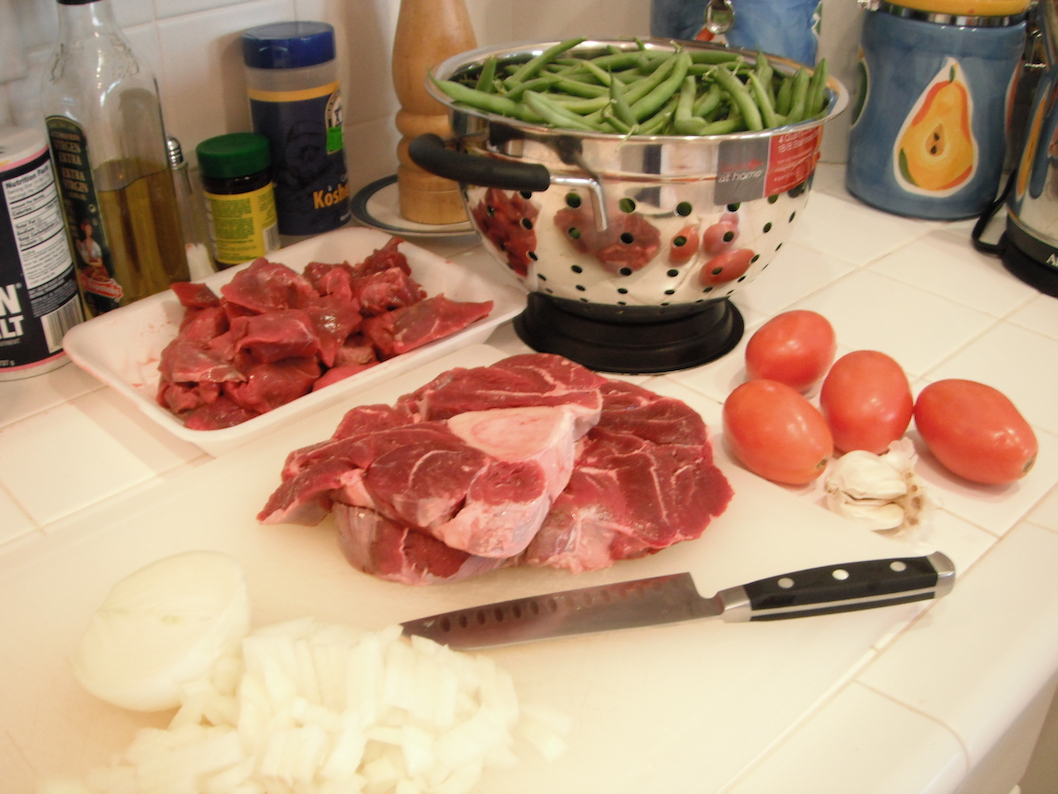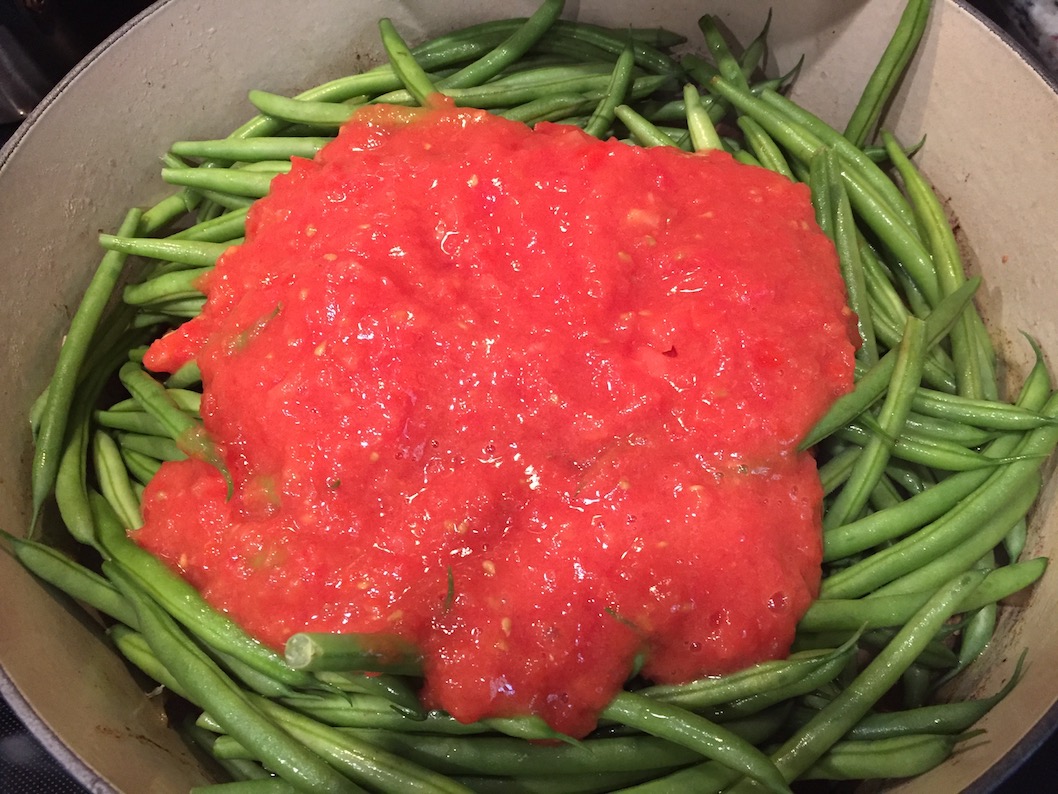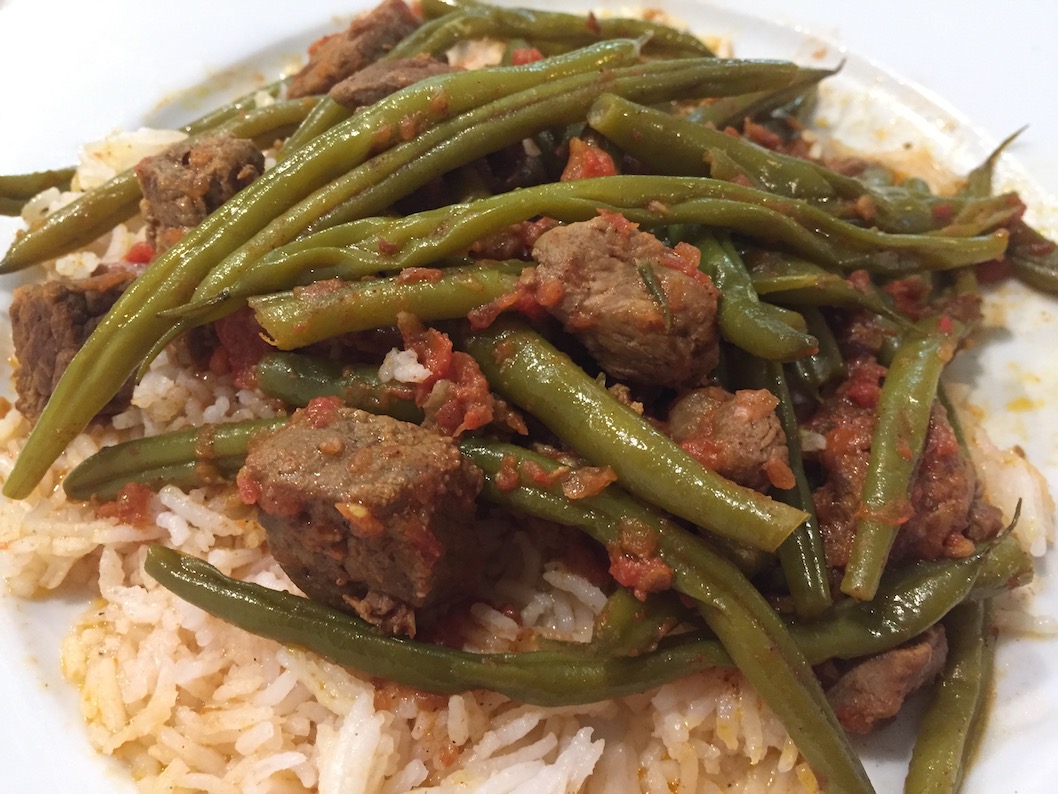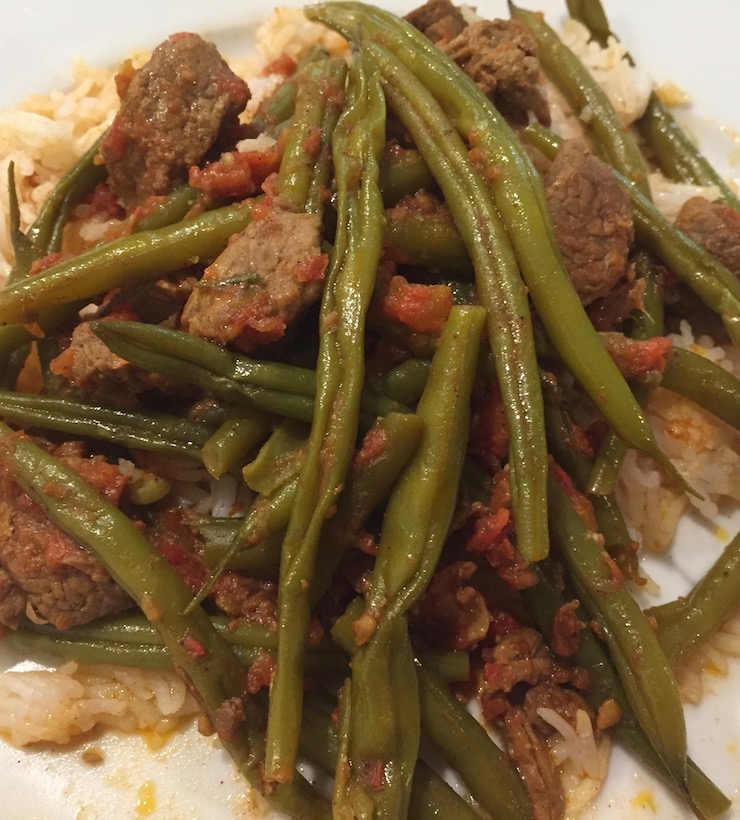The following dish is one of the dishes I grew up on. Both my Kurdish grandma (my mother’s side of the family) and my Persian aunts (my father’s side of the family) used to make this stew. They each had their own methods and they used different spices, so the dish tasted a little different, but the result was always great. My mother used to make this stew a lot at home, usually substituting chicken or turkey for the beef and only using salt and pepper to spice the dish. Again, the end product came out tasting slightly different, but still always delicious.

Notes and Tips:
- Meat: Your choice of meat determines the cooking time and the cooking process. If you choose to substitute chicken or turkey for beef, you do not need to cook the meat separately. After sauteing the onion, add the rest of the ingredients to the pot at the same time, bring to a boil, lower the heat and cook for an hour.
- My prefered meat cut for beef stews is the shank. It is soft and the least stringy of all the other cuts used for stews. It usually comes bone-on, and depending on the stew, you can either leave the bone to cook in the stew (edds so much flavor!), or remove the bones when you cut the meat into small pieces and use the bones to make soup or stock. If you can’t get your hands on a beef shank, chuck is a good option as well.
- String beans: You may either use fresh string beans or frozen ones. Fresh string beans add freshness and vibrance to the dish, but they are not always available and they also require some preparation before the are ready to be used. When in season, you can find fresh string beans at the produce section of your local supermarket. Frozen string beans are easier to find and handle, and the end result is still delicious, so that might be a more favorable choice.
- Tomatoes: Just like the string beans, fresh tomatoes add freshness and vibrance to the dish, but they require some extra work (rinsing and pureeing the tomatoes in a food processor). Using pureed canned tomatoes saves some time and work, but if comes on the account of freshness.
- Spices: Adding the cinnamon and turmeric to the dish will add a Persian flair to it. I sometimes add those spices to the dish when I’m in the mood for more complex flavors, but most of the time I like to keep it simple and only use salt and pepper. This is the version you will find in most Israeli homes.


Beef and String Bean Stew
Ingredients
- 3 tbsp oil
- 2 medium onions
- 3 lb beef shank, bones removed
- 2 lb string beans
- 2 tbsp tomato paste
- 3 cups fresh or canned tomatoes, pureed
- 4 cloves garlic, minced
- Salt and pepper
- 1 tsp cinnamon (optional)
- ½ tsp turmeric (optional)
Instructions
- In a large pot heat the oil on high heat. Add the onion and sauté until onion is translucent.
- Cut the meat into 2 inch pieces and add to the pot. Seal the meat stirring it occasionally. Lower the heat to medium-low and cook for 30 minutes.
- Trim the ends of the string beans and cut them in half (skip this stage if you use frozen beans). Add to the pot together with the pureed tomatoes, tomato paste, garlic, and the spices. Stir well.
- Cover the pot and cook for an hour and a half.
- Every once in a while, stir the contents of the pot and make sure the stew has some liquid to cook in (not a lot). Add a little water if needed, so the stew doesn’t get burned.
- Serve over white rice or mashed potatoes, or just dip some good bread in the sauce and enjoy!

I make it with chicken breast, as my husband is not allowed beef or dark meat, and I use fresh diced tomatoes, otherwise it’s very close to your recipe, Tali, and it’s delicious. I wonder where my grandmother got the recipe!